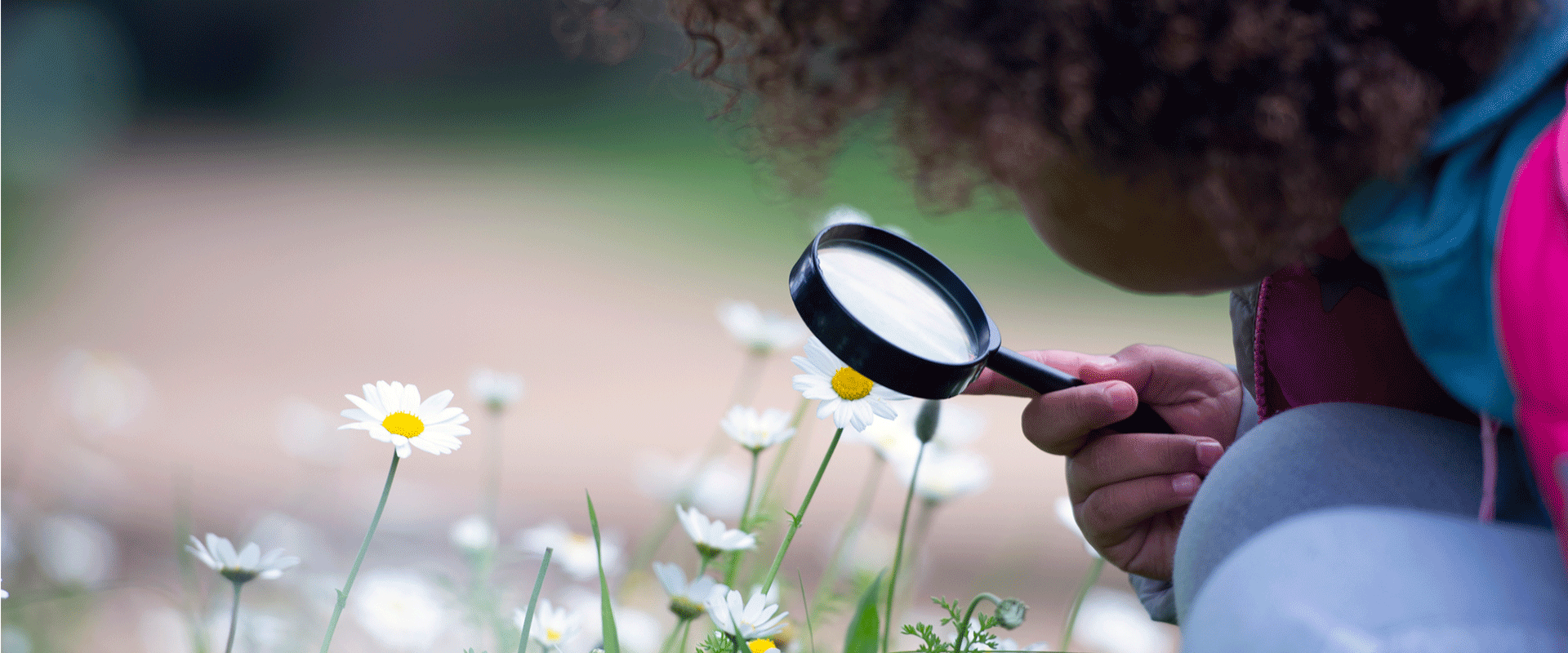Tiny Creatures: Finding bugs and insects

Summer is well and truly upon us and with it comes a variety of wildlife. Butterflies, birds and all manner of creepy crawlies are out in force, enjoying the warm weather and greenery. While it can be alarming for some to find six or eight-legged creatures in the home, insects lead lives almost as busy as ours and have a big part to play in nature. Now is the perfect time to teach your child about the tiny creatures around us. Go out and track them down!
Bug Hunt
It doesn’t matter whether you live in the countryside or the city; your nearest green space and the nature that comes with it isn’t hard to find.
A bug hunt is a brilliant way for your child to learn about the natural world. Take them outside on a walk to see what you can find together. Identifying familiar bugs gives your child confidence in the activity. Learning the names of new creatures encourages their curiosity and expands their knowledge.
Download and print our Bug Hunt Checklist to help you get started, take a magnifying glass to really get into character, and spend the day exploring.
5 Fabulous Bug Facts
Does your child know these facts?
- Butterfliestaste with their feet.
- Grasshoppersexisted before dinosaurs!
- Fruit flieswere the first living creatures to be sent into space.
- Caterpillarshave 12 eyes!
- One dung beetle can drag 1,141 times its weight – that’s like a human pulling six double-decker buses!
The Best Places to Find Insects:
Insects live in nearly every habitat. They enjoy either cool, damp locations that are hidden from direct sunlight, or the exact opposite.
- Butterflies and bees are attracted to bright colours. Find them in flowerbeds, bushes and around trees.
- Woodlice and worms can be found under piles of leaves, stones and logs or in the soil.
- Insects also love bodies of water, such as lakes and ponds, and the long grass that surrounds them.
If you are looking to take some photos during your adventure, it’s best to go hunting in the early morning. Insects are less active at this time so are more likely to stay still for your camera! Later on, when it gets warmer, they’ll be livelier and more visible.
Watch the Sting!
Bees do much more for our environment than we might realise. Beyond making honey, their work pollinating flowers and crops keeps food in our bellies and preserves our healthy ecosystem. Fruits, vegetables, cotton, flax and even the plants we feed to cattle rely on honeybees to pollinate them.
Bees won’t tend to sting you unless they feel threatened, or their hive is disturbed. Stay well away from any hives and be gentle around bees in the wild. Approach busy flowerbeds slowly and don’t wave or swat at any bees. Tell your child they can look, but not touch.
If you want to do your part to help bees, planting flowers is a great place to start. Whether in a garden, balcony or window box. Visit Gardeners World for a guide on the best flowers to plant.
Bug Hotel
If you have space in your garden and don’t mind playing host to creepy crawlies, you and your child can build a bug hotel. You can use any old natural materials you have lying around to build a structure no more than a metre high.
Books to Read & Inspire Your Child
- 123 A Walk in the Countryside by Rosaline Beardshaw, 0-3 years
- The Grouchy Ladybug by Eric Carle, 3+ years
- The Boy Who Lost His Bumble by Trudi Esberger, 4-7 years
If you enjoyed this article and found it to be useful, you can check out more of our early childcare resources in our Family Resource Zone!
And, if you’re not yet a Bright Horizons parent, but are interested in what our nurseries can offer your child on their exciting educational journey, book a personal tour at your local nursery today!





